Always-safe Volvos add style, technology for 2018
Filed under: Equinox, Features, Autos
By John Gilbert
DENVER, COLO.
As members of the car-buying public, we’ve spent our lifetimes compromising when it comes to car-buying. We might want something sporty, great looking, and quick, but we also have families who require that our first choice becomes solid, roomy and safe. We’ve also watched as most companies tried to make their cars as attractive as possible, then added stuff on in hopes of making them safer.
Because of all that, and what we’ve observed, and the small portions that we’ve learned, you’ve got to hand it to Volvo, which seems to have gotten to the sweet spot in the compromise by sticking to safety and letting stuff like luxury, attractiveness and performance come along at its own, leisurely pace. From my vantage point, it appears Volvo has found the hot button. My favorite, for now, is the new 2018 QX60, a compact, midsize SUV that does everything I could ever want in a vehicle.
The 2018 array of models coming out with Volvo’s vehicles, with their slashed bar over the grille and “Thor’s Hammer” headlight design, come as close as it gets to being all things to all people. For a price, of course. Such quality and built-in safety and technology don’t come cheap. The S90 runs from $49,195 in base T5 Momentum form up to nearly $70,000 in loaded T8 all-wheel-drive top trim. The V90 ranges from $50,000 to $53,000 coming only with front-wheel drive. And the XC60 starts at $42,495 for the Momentum, $45,900 for the R-Design, and $46,300 for the Inscription, and all XC60s come with all-wheel drive.
Once a Swedish company that made rock-solid safe cars, then a Ford affiliate that made safer cars for different reasons, and now a Swedish company owned by a Chinese conglomerate that is making cars that fulfill every angle of every car compromise, Volvo has kept its eye on its own, stubborn target. Under the financial umbrella of Geely, Volvo is still headquartered in Gothenberg, Sweden, but it now makes some vehicles in China — where it is sure to be a huge seller — and is also building a state-of-the-art factory in the U.S. Read more
Volvo’s new XC60 might prove less is more
Filed under: Equinox, Features, Autos
By John Gilbert
BARCELONA, SPAIN
Driving in Spain is a colorful adventure that I had experienced once before, so I felt somewhat familiar during the global auto media’s first opportunity to drive Volvo’s new XC60, the all-new midsize derivative of its superb XC90 SUV.
Volvo stressed the quick and agile handling of the smaller and lighter vehicle with the same powertrain as the larger XC90, which collaborated with Spain’s freeway exits to instantly become more concise than words could describe.
On the North American side of the Atlantic, our freeway exits are usually pretty straightforward — you see the exit and veer onto it, heading for another freeway. In Spain, the freeway system was added to centuries-old cities and rural regions, so it’s a little trickier. Often, you head onto an exit and find it immediately splits right and left. I learned this on my first driving trip to Spain, for the splendid S90 Volvo sedan.
On this trip, our total test drive route was programmed into the navigation setting of our T6 all-wheel drive XC60, so we were informed of upcoming moves by a “Nav Lady,” whom we shall refer to as a “Nav Seniorita” for the sake of geographic accuracy. I drove first, so my co-driver/passenger — a Californian who shall be called “Billy” — could check out the wonderful scenery along and just inland from the Mediterranean without worrying about directions.
Our next exit was to the right and our Nav Seniorita said: “Prepare to keep right and take the next exit, then immediately keep left.” As I pulled into the right lane, she said, “Take the next exit.” Smoothly and at about 80 kilometers per hour I eased off onto the exit. Then with what seemed like urgency the Nav Seniorita said: “Now keep left!”
You don’t want to miss an exit in the Land of Roundabouts, so I abruptly swerved back to the left of the exit barrier, and as the XC60 easily cleared the barrier, but Billy said, “No! Stay right!”
I swerved very abruptly back to the right, still missing the barrier with ease and getting back onto the exit, as the XC60 held its attitude with more poise than its driver, who might have been reflecting the adrenaline rush rising to max. I spotted the split immediately ahead and stayed left, making it smoothly.
I was impressed that I had reacted instantaneously twice, with two very abrupt left-right swerves at highway speed, and more impressed that the XC60 got it right-on, even while our Nav Seniorita was a bit premature with her counter-direction. The vehicle carried out my impulses without any squeals of complaint or any hint of body roll.
Inadvertent or not, it’s always nice to get a real-world example of a vehicle’s features rather than just to accepting marketing claims. We believed them when they talked about the lighter and smaller XC60 having better agility than the XC90, because in totally revising the XC60, Volvo took the XC90’s SPA — Scalable Product Architecture — shortened it, and installed the same high-tech powertrains from the XC90 with all-new suspension stuff. Read more
Compact crossovers rule auto-show world
Filed under: Features, Autos
By John Gilbert
CHICAGO, ILL. — The available shelf-life of an auto show is brief, but for Midwesterners who can get to the fine city of Chicago before February 20, there is a chance to turn a short trip to enjoy countless fine restaurants, nightclubs and blues joints into the chance to see all the newest stuff available from the top automakers of the world.
This may not be the most scintillating season for new vehicles, because Los Angeles and Detroit have already run their car-show course before the annual Chicago Auto Show hits McCormick Place, and most new cars have been shown already. But the nation’s best exhibition hall has a lot of things consumers will find of great interest. Mainly, the current upsurge in interest in small crossover SUVs is evident everywhere.
You can range from Ford — featuring the return of the gy-normous Expedition for large family and trailer hauling, but also tipping off its mini EcoSport, just a bit downsized from the populsr compact Escape. And the tiny but roomy C-Max which is nothing if not electrifying, remains.
The Mustang has been revised again, but its various recent styling twitches and tweaks have reached the point where a variety of them might prove impossible to discern from the others. No more V6, however, as Mustang goes from stalwart V8 to EcoBoost 4s.
KIA is showing off the all-new Stinger luxury/sports sedan in all its South Korean sleek splendor, but it also has the intriguing new Niro Hybrid compact SUV.
Toyota displays TRD sporty versions of the Tundra and Tacoma pickups and Sequoia large SUV, but finds it difficult to hide the swoopy little C-HR that starts out south of the popular RAV4 in both size and price. Its upscale Lexus display features the LS large sedan, which has taken on a much sportier demeanor, and a couple of SUVs that also play to the small but high-performance concept.
The Mazda display is easy to overlook, because the stylish group of vehicles is familiar. But they deserve scrutiny. The large CX-9 has been out a while, and the Mazda6 and Mazda3 sedans look quite the same, too, as do the new small crossovers, the CX-3 and the CX-5. The CX-5 actually is all new, and if you look closely, the red one is a red that is exclusive only to the CX-5. The true newness of all the Mazdas is something called G-Vectoring — an incredible new technological concept that gives all 2017 Mazdas the ability to tip off the driver to turn and swerve in a predictable manner that means the elimination of steering correction. The cars are beautiful, but beauty is “only” skin deep, so look closer!
Nissan, on the other hand, is leading the way in using graphic design, such as solid paint schemes of white, grey, red or black, all with stark black trim, to promote a new Midnight fleet of virtually everything it makes, from the more powerful half-ton Titan XD pickup, on down to the Rogue and all the sedans, down to the Sentra. Yet the display might be stolen by the subtly downsize Rogue Sport, which is a foot shorter than the regular Rogue. The all-new Armada stands above the other Nissans in size and capability, and a new Pathfinder, which benefits from Nissan’s new engine upgrades.
General Motors is taking a similar route, coming out with a Red Line trim feature on a large group of its vehicles. It’s a familiar idea, to use paint schemes to disguise the fact that you’ve already shown most of your stable, but of course Chevrolet has the all-electric Bolt, which continues to wrack up assorted Car of the Year awards, even though it is not yet out on the streets, and may not be until mid-summer.
Fiat Chrysler Automobiles have all sorts of new toys, featuring the Alfa Romeo Giulia — finally — and the Stelvio, which is a brother in arms with a crossover SUV so flashy that Alfa is pulling back its idea of a Giulia wagon. Also, yet another variation for the Challenger, which just introduced the AWD Challenger GT and now is hitting us with the Mopar Challenger with a giant 6.4-liter Hemi, and a Durango SRT hot rod SUV. Meanwhile, its Jeep arm displays its array and gives proper reason for why the compact Compass still exists by showing off the to-be-introduced new model with refined restyling that stays just north of the Renegade.
The Germans are not to be outdone, of course, with Volkswagen’s new Atlas large SUV as well as the Golf Alltrack and the elongated Tiguan — which will join and then probably replace the blunt but roomy-enough Tiguan, an under-appreciated vehicle that might have been well-sized for this current compact crossover trend.
BMW has its latest SUVs and also the new 5-Series, while Mercedes now has so many SUVs, crossovers and sports cars — many of them with added AMG potency — that it’s hard to find room to walk among them and identify the alphabetized nameplates that only a marketing whiz can remember.
Audi has a fine spread of Q-ship SUVs of all sizes, and sedans and coupes to seduce anyone with a tidy checkbook.
Jaguar also has a dazzling display, with its slinky coupes and new high-tech sedans, as well as the F-Pace, a hot-looking vehicle that indicates the folks at Coventry catch on when it comes to building a promising SUV. Adjoining the Jaguars is the off-road cousin Land Rover display, with new and fancy top-end SUVs and also the newly redesigned Discovery, which now has its name spelled out on the upper lip leading edge of its hood, where it used to say Land Rover.”
Subaru has a new Legacy, and it advances the company farther along the lines of being less quirky and more mainstream. Which is a good thing for Subaru, as it continues to make durable and strong flat-opposed engines that I wish would get better fuel economy.
Mitsubishi is another Japanese company that always seems to be seeking an upturn, and it now is being propped up by Nissan.Its new Outlander SUV is the only new thing, offsetting the elimination of the Lancer and its much-loved Evolution.
Hyundai is about to introduce its new Ioniq, which may indeed be iconic — or iconiq — with a choice of all-electric, hybrid or plug-in hybrid. Meanwhile, Hyundai added to its complement with the new GT version of the popular Elantra, its Civic-Corolla-Mazda3 sized compact, now with about double the high-grade steel, to 53 percent. It has a fresh new style with a hatchback-wagon theme that Hyundai designers have turned into a true sporty vehicle. So sporty, in fact, that I asked Hyundai folks why, since they offer the same 1.6-turbo 4 as the Tucson crossover, they don’t add the AWD platform under the Hyundai GT. All I got were blank stares.
But arming compacts with the very feature that is allowing compact crossovers to crowd small sedans to a lesser corner in the marketplace might be the one distinct way to fight back and change the all-out crossover SUV trend to trend of compact sedans that do the work of crossovers.
Auto Show season 2017 stirs up new Buzz
Filed under: Equinox, Features, Autos
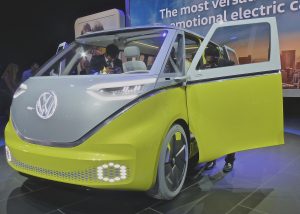
Nobody says it’s a new Microbus, but VW’s concept I.D. Buzz has the shape, with electric power and autonomous drive.
By John Gilbert
DETROIT, MI. — Self-driving vehicles, continued electrification of our global driving future, and an endless stream of sport-utility vehicles of all shapes and sizes are the indelible story of the 2017 North American International Auto Show, which consumed early January, 2017.
High-performcance and luxury vehicles were present also, of course, but nearly all manufacturers were either proclaiming or hinting about electric or autonomous (self-driving) cars.
Those of us who love to drive, to push a car to its limits with skill and dexterity — both yours and your car’s — may recoil at the thought of computer gremlins taking over the operation of our future cars, but that’s where we’re headed and everybody wants to be leading the pack.
For that reason, a highlight of the Detroit show for me was the showing of the I.D. Buzz. Strange name indeed, but it’s just the nickname of a Volkswagen concept vehicle that could well be the long-awaited emergence of the modernized Microbus, that hippie-happy minivan of the 1960s.
The Buzz is an eye-catcher, to be sure, and it’s obviously a concept vehicle because it’s hard to imagine it coming to life in production. But it ties together all of the ingredients for success on the auto show circuit of 2017 — an inventive and retro-flair people-hauler with an interior that could pass as a high-tech den, plus all-electric power with a range of 270 miles on a charge, and autonomous operation.
Take a roundabout visit to Spain
Filed under: Equinox, Features, Autos
By John Gilbert
ESTEPONA, Spain
Volvo took a roundabout route to developing its impressive new S90 sedan — first building the XC90 SUV, then making the S90 virtually a sedan-size derivative — and the introduction test drive of the carliterally took us on a roundabout route.
The area we visited, along the Spanish Riviera between Malaga and the resort city of Estepona, would seem to indicate that Spain might lead the world in “roundabouts,” those intersection replacements that turn important roadway interchanges into forced-slowdown circles with various inlets and outlets. In congestion, of course, entering a rotary can be dicey and exiting can be more like an escape.
In southern Spain, it seemed as though nearly every exit from a freeway sent you into a roundabout, which in turn distributed traffic in any and all directions. We weren’t aware of all that when we first arrived in Malaga, then rode a coach bus to our luxurious Kempinski Hotel Bahia in Estepona.
Our wave of auto journalists gathered to leave our for dinner at El Pescadoran, where we learned another Spanish tradition. You sit family style, and waiters bring out large platters or bowls of delectable food. Unwilling to leave any, we ate virtually every morsel, then the waiters took the platters away and replaced them with more platters of different delectable items.
The lengthy menu we had seen, briefly, was impressive, but the reason nobody asked us for our selections was they intended to bring us ALL of the selections. Next morning, we had some discussions, and then we were off on Leg 1 of our 4-Leg test drive. Three of the legs would be in S90 sedans, and the fourth in the V90, a slick and sleek station wagon that seems much longer than the sedan, but actually is 3 inches shorter.
My driving partner was Parks McCant, a tall fellow I’d met at the Malaga, Spain, airport, as we joined forces hoping to form a posse that might locate a person wielding a Volvo sign to direct us to a bus that might convey us to our hotel. We struck a quick and easy relationship, and, because he’s 6-foot-6, I knew he would provide real-world evidence of adequate head and legroom in our test cars.
I got behind the wheel first, and after agreeing on the luxurious comfort enveloping us, and the impressive ergonomics of the controls and other features, we were off.
Our start was so intriguing we decided to repeat it three or four times — involuntarily, of course. Instead of the usual direction book, Volvo installed all the turns for the route into the navigation system, which is a great idea. A pleasant, soothing female voice suggested when to get into the right lane, prepare to turn, and then turn.
We only went a mile or so and were instructed to exit. At the top of the exit ramp we found our first roundabout. The Nav Lady told us to take the third exit from the roundabout, which we did. We should have taken the second, but we didn’t know that, so we trusted the instructions.
The highly efficient Nav Lady, with proper Scandinavian courtesy, didn’t tell us we had fouled up, but merely directed us back on course. So we thought we were merrily on our way, following a sequence of directions to cross a bridge to another roundabout, followed by directions to another roundabout, then a third roundabout. That got us back near our starting position, and because it was all pretty unfamiliar, we sailed off again. We followed the same instructions the second time, and it wasn’t until partway through the third lap around the same sequence of roundabouts that we realized we were repeating our mistake.
Somehow, the wrong instruction trapped in a sequel-with-roundabouts of the Bill Murray movie “Groundhog Day,” where the star is destined to repeat everything, day after day, trapped in some cosmic vortex. Read more


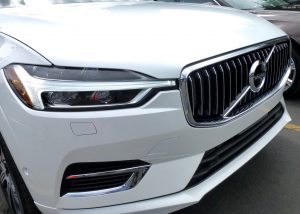
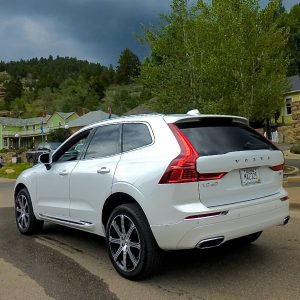
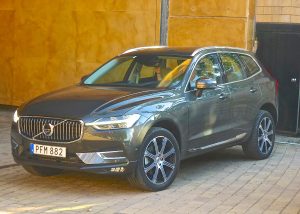
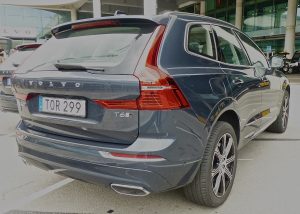
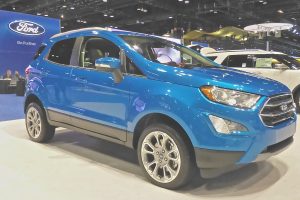
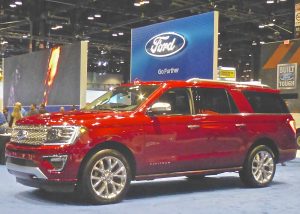

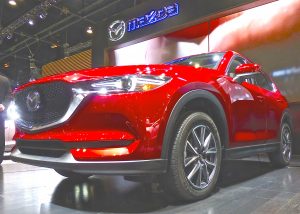
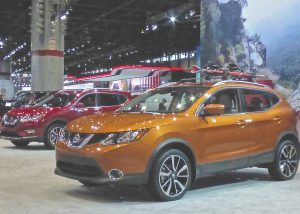

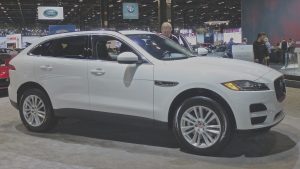
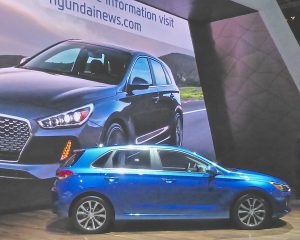
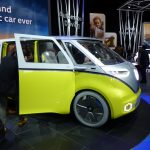

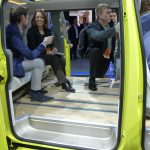

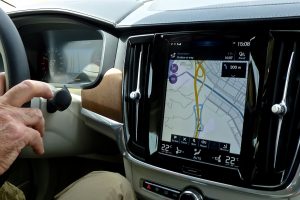


 John Gilbert is a lifetime Minnesotan and career journalist, specializing in cars and sports during and since spending 30 years at the Minneapolis Tribune, now the Star Tribune. More recently, he has continued translating the high-tech world of autos and sharing his passionate insights as a freelance writer/photographer/broadcaster. A member of the prestigious North American Car and Truck of the Year jury since 1993. John can be heard Monday-Friday from 9-11am on 610 KDAL(www.kdal610.com) on the "John Gilbert Show," and writes a column in the Duluth Reader.
John Gilbert is a lifetime Minnesotan and career journalist, specializing in cars and sports during and since spending 30 years at the Minneapolis Tribune, now the Star Tribune. More recently, he has continued translating the high-tech world of autos and sharing his passionate insights as a freelance writer/photographer/broadcaster. A member of the prestigious North American Car and Truck of the Year jury since 1993. John can be heard Monday-Friday from 9-11am on 610 KDAL(www.kdal610.com) on the "John Gilbert Show," and writes a column in the Duluth Reader.